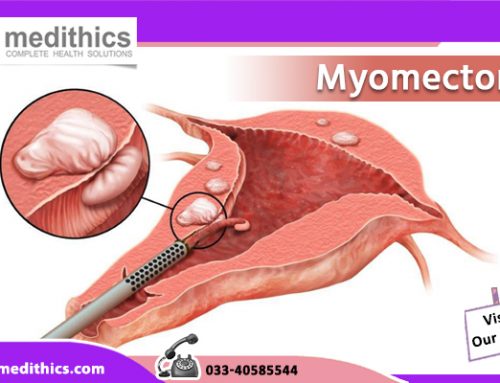When uterine polyps, kind of non-cancerous cells overgrow and form within the inner walls of the uterus, Hysteroscopic Polypectomy surgery is performed to remove the polyps. Although Hysteroscopic Polypectomy removes the uterine polyps, it can help preserve the uterus. The recovery time of Hysteroscopic Polypectomy surgery is very short ranging from a day to a few days or weeks.
Overview
Hysteroscopic Polypectomy is the removal of polyps from the uterus. The surgical procedure of Hysteroscopic Polypectomy removes uterine polyps, keeping the uterus intact. The size of a polyp varies from a few millimetres to many centimetres. Usually, the polyps grow within the wall of the uterine cavity. In some cases, the polyps may slip down into the opening of the uterus in the vagina.
So far, no studies have been able to define the actual cause of polyps, but it is examined and found that they grow when there is an imbalance of estrogen hormones in the female bodies.
The recovery time of Hysteroscopic Polypectomy depends upon the type of surgical procedure selected by patients. The symptoms of Hysteroscopic Polypectomy are usually bleeding or spotting and cramping, but these vary from patient to patient, depending upon the her health condition. Only after consulting with the patient, the best gynaecologist decides whether a Hysteroscopic Polyectomy surgery is required or not. If yes, the patient has to go through a preparation routine before the surgery.
Before the Treatment
- Your hospital will give you a thorough guidance on the preparations before Hysterescopic Polypectomy. First off, the patient should consult with her doctor and tell about her health condition, whether she is taking any pills or medicines and whether she has any health-related issues. Accordingly, the gynaecologist may suggest her to stop taking certain medicines or start taking newer ones as prescribed.
- The preparation before the surgery depends upon the types of anaesthesia that will be administered. For local anaesthesia, there is no special preparation required. However, in case of general anaesthesia, the patient is asked to stop taking any drink or food for several hours before the surgery. Smoking is strictly prohibited several days before the surgery. Once the patient is ready on the day of the surgery, she is taken to the surgical bed.
- Most importantly, patients are generally given a non-steroidal anti-inflammatory painkiller to help minimize pain just after the procedure.
How it is performed
The question how to perform Hysterescopic Polyectomy is answered here. In many hospitals, gynaecologists prefer to do an ultrasound scanning before performing hysterescopy. Depending upon the health condition and choice of the surgery of patients, the type of anaesthesia is decided. The procedures that follow are:
- The doctor inserts a special type of instrument, called hysterescope, for viewing the neck of the womb or the cervix area.
- Then he guides a long and lighted instrument called hysterescope through the vagina and the cervix into the uterus. The hysterescope uses electricity to shed laser beam on the polyps in the uterine cavity to cut them through into pieces. The instrument is used to shave the polyps until they align with the upper surface of the uterine cavity.
- During the procedure, the hysterescope is attached to a camera and to a monitor to help surgeons view the inside of the patient’s uterus while performing the surgery. Sometimes, fluid or gas may be pumped inside the patient’s uterus to inflate her abdomen for better visibility of the lining of the uterus on the screen.
- Once tiny tissues are removed from the uterus, they are sent for biopsy. Small polyps found within the uterine cavity are removed as well during the procedure or they are eliminated during the test. Once done, the hysterescope is gently removed. It takes 5-30 minutes to perform Hysterescopic Polyectomy.
Recovery
If the patient undergoes local anaesthesia, she is discharged after a short rest. She should feel comfortable and painless to walk around or travel in train or bus. If sedatives are administered during the surgery, then the patient should have a friend or relative to drive her home.
On the other hand, in case of general anaesthesia, the patient may have to stay at least 24 hours after the surgery until the effects of anaesthesia have passed. She must have someone to drive her home.
Within few days of the surgery, patients may experience mild bleeding or period-like cramps. It is suggested to use sanitary towels instead of taking tampons. Full recovery of Hysterescopic Polyecyomy takes a couple of weeks or more.






Leave A Comment
You must be logged in to post a comment.